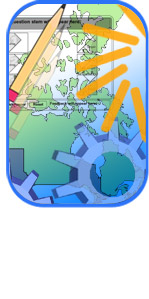Figure 1: This figure describes the production possibilities for Canada and Brazil, for 2002, for the two products: pizza and chicken wings. Both nations are assumed to have the same amount of resources. Before specialization and trade, each nations is at production possibility combination F.

1. Refer to Figure 1, above, to answer the following. In Brazil, the opportunity cost of one tonne of wings is
A. 4 tonnes of pizza.
B. 0.25 tonnes of pizza.
C. 3 tonnes of pizza.
D. 0.33 tonnes of pizza.
2. Refer to Figure 1, above, to answer the following. Which of the following is true?
A. Canada has the comparative advantage in pizza.
B. Canada has the comparative advantage in wings.
C. Brazil has the comparative advantage in pizza.
D. Brazil has the absolute advantage in pizza.
3. Refer to Figure 1, above, to answer the following. Which of the following is true?
A. Canada has the absolute advantage in pizza.
B. Canada has the comparative advantage in wings.
C. Brazil has the comparative advantage in pizza.
D. Brazil has the absolute advantage in wings.
4. Refer to Figure 1, above, to answer the following. If both countries specialize according to comparative advantage, total world production will
A. decrease by 4 pizza tonnes, and by 2 wings tonnes.
B. increase by 4 pizza tonnes, and by 2 wings tonnes.
C. increase by 2 pizza tonnes, and by 4 wings tonnes.
D. increase by 2 pizza tonnes, and by 2 wings tonnes.
5. Refer to Figure 1, above, to answer the following. After specialization according to comparative advantage, what would be the limits of the terms of trade for one tonne of pizza (for trade to be mutually beneficial)?
A. between .33 tonnes and 3 tonnes of wings
B. between .25 tonnes and 4 tonnes of wings
C. between .25 tonnes and .33 tonnes of wings
D. between 3 tonnes and 4 tonnes of wings
6. Refer to Figure 1, above, to answer the following. Suppose, after specialization according to comparative advantage, both nations agreed to trade 10 tonnes of pizza for 36 tonnes of wings. What would the gains from trade be?
A. Canada gains 4 pizza tonnes; Brazil gains 2 wings tonnes
B. Canada gains 2 pizza tonnes; Brazil gains 4 wings tonnes
C. Canada gains 4 pizza tonnes; Brazil gains 4 wings tonnes
D. Canada gains 2 pizza tonnes; Brazil gains 2 wings tonnes
7. Refer to Figure 1, above, to answer the following. After trade takes place, which of the following will most likely result?
A. Canadian pizza sellers will gain.
B. Brazilian wings sellers will lose.
C. Canadian wings sellers will gain.
D. Canadian pizza sellers will lose.
Figure 2: This figure describes the production possibilities curves for Canada and the U.S., for 2003, for the two products: rum and cola. Both nations are assumed to have the same amount of resources devoted to producing rum and cola. Before specialization and trade, each nation is at production possibility combination F.

8. Refer to Figure 2, above, to answer the following. In the U.S., the opportunity cost of one tonne of rum is
A. 5 litres of cola.
B. 0.20 litres of cola.
C. 3 litres of cola.
D. 0.33 litres of cola.
9. Refer to Figure 2, above, to answer the following. Which of the following is true?
A. Canada has the comparative advantage in cola.
B. Canada has the comparative advantage in rum.
C. The U.S. has the comparative advantage in rum.
D. Canada has the absolute advantage in cola.
10. Refer to Figure 2, above, to answer the following. Which of the following is true?
A. The U.S. has the absolute advantage in cola and rum.
B. Canada has the comparative advantage in cola.
C. The U.S. has the comparative advantage in rum.
D. Canada has the absolute advantage in rum.
11. Refer to Figure 2, above, to answer the following. If both countries specialize according to comparative advantage, total world production will
A. decrease by 40 cola litres and 0.20 rum litres.
B. increase by 40 cola litres and 0.20 rum litres.
C. increase by 20 cola litres.
D. increase by 20 rum litres.
12. Refer to Figure 2, above, to answer the following. After specialization according to comparative advantage, what would be the limits of the terms of trade for one tonne of cola (for trade to be mutually beneficial)?
A. between 5 litres and 0.20 litres of rum
B. between 3 litres and 0.33 litres of rum
C. between 3 litres and 5 litres of rum
D. between 0.20 litres and 0.33 litres of rum
13. Refer to Figure 2, above, to answer the following. Suppose, after specialization according to comparative advantage, both nations agreed to trade 10 litres of rum for 40 litres of cola. What would the gains from trade be?
A. Canada gains 40 cola litres; U.S. gains 40 rum litres
B. Canada gains 40 rum litres; U.S. gains 40 cola litres
C. Canada gains 10 cola litres; U.S. gains 10 cola litres
D. Canada gains 10 rum litres; U.S. gains 10 rum litres
14. Refer to Figure 2, above, to answer the following. After trade takes place, which of the following will most likely result?
A. Canadian rum sellers will gain.
B. U.S. rum sellers will gain.
C. Canadian cola sellers will gain.
D. all of the above
15. Refer to Figure 2, above, to answer the following. After trade takes place, which of the following will most likely result?
A. Canadian rum sellers will lose.
B. U.S. rum sellers will gain.
C. Canadian cola sellers will lose.
D. all of the above

![]()
